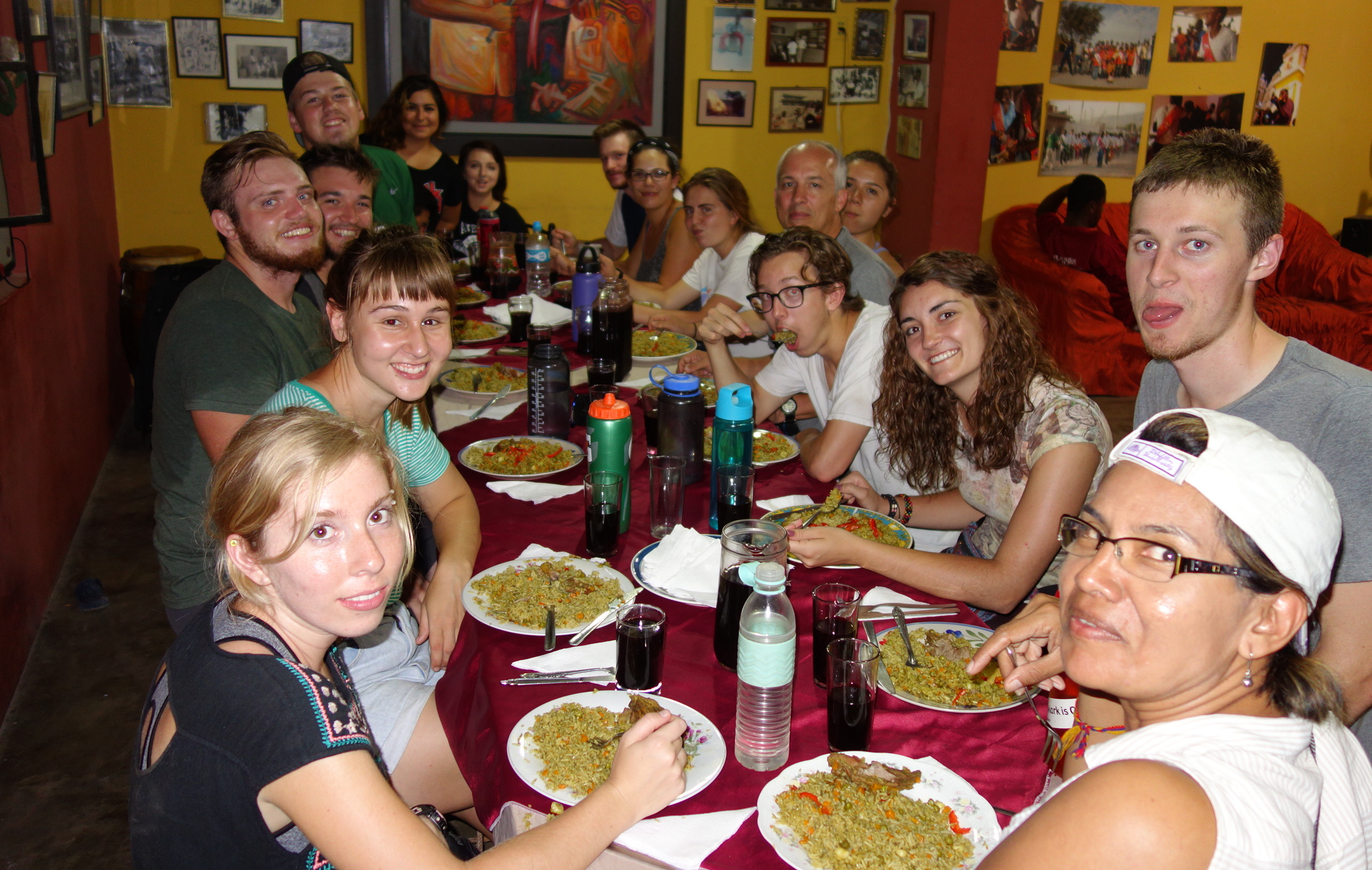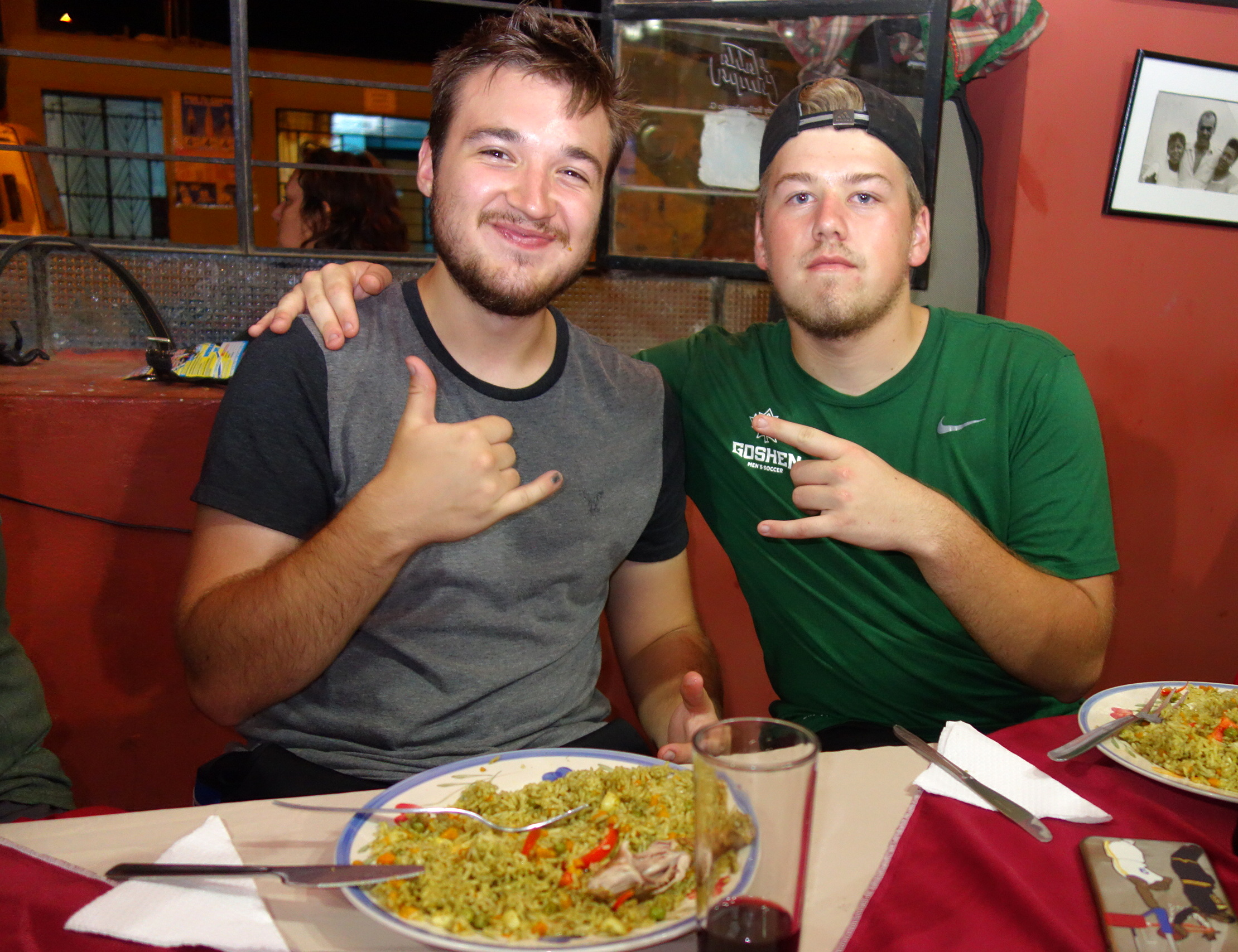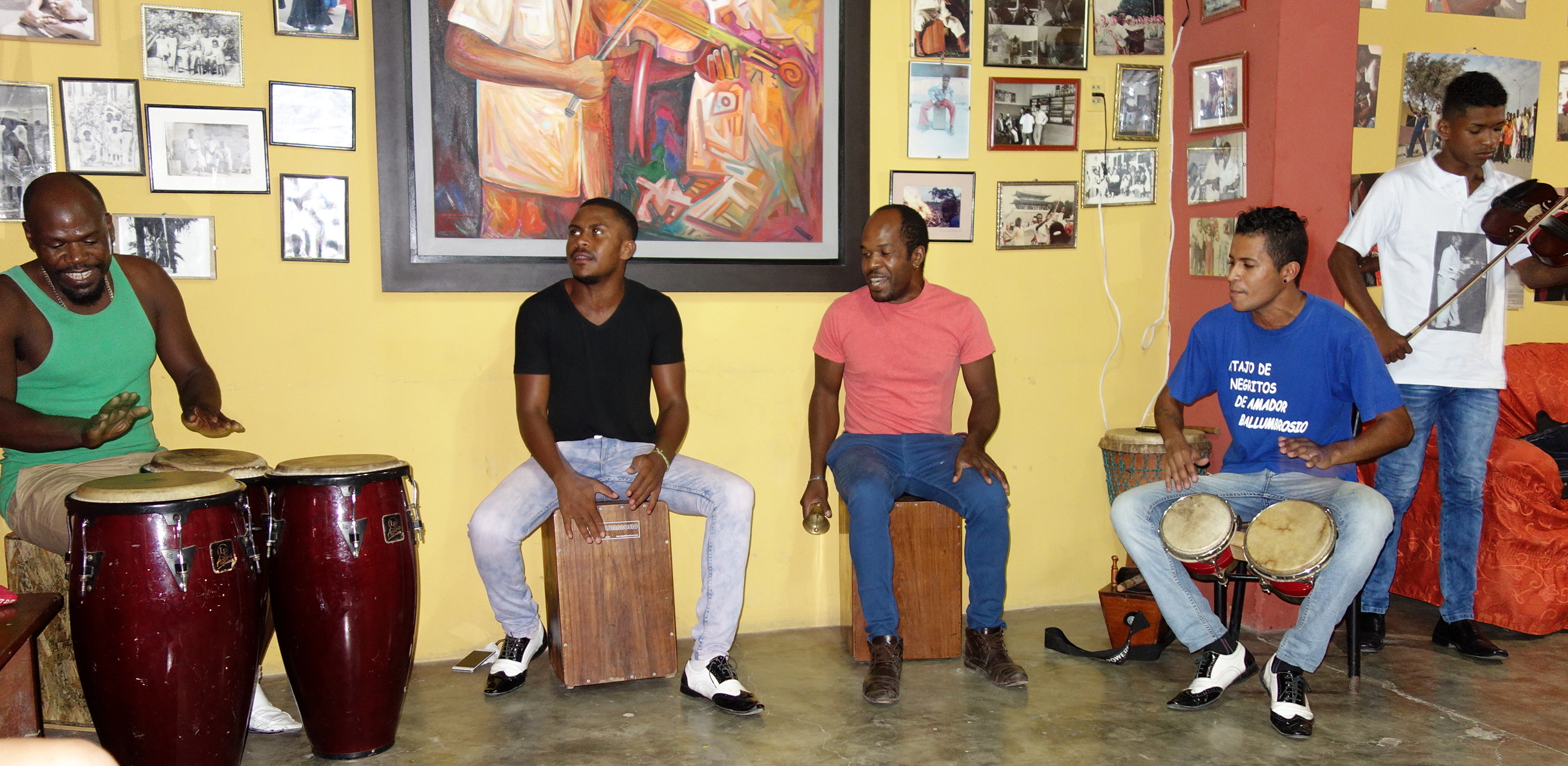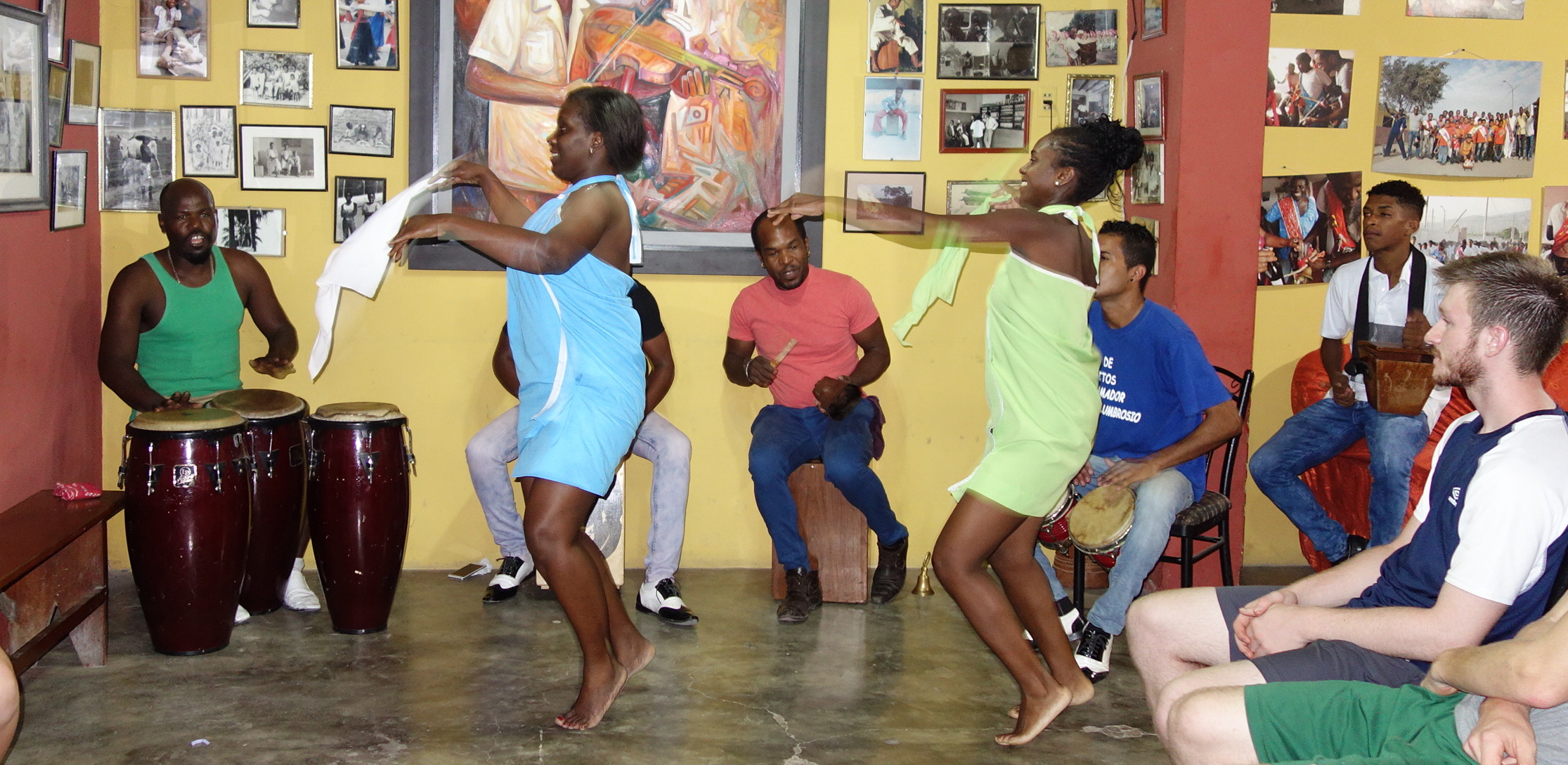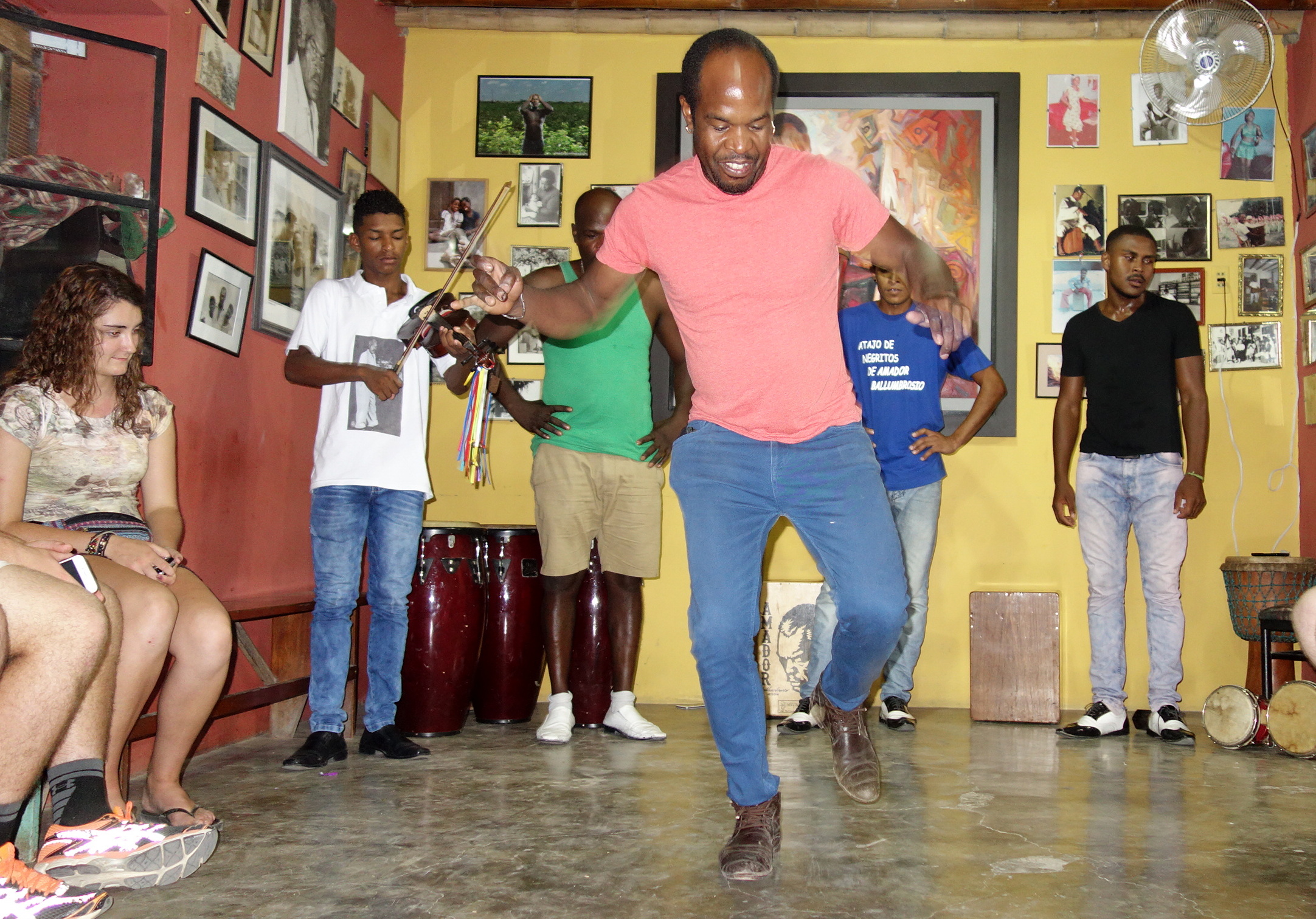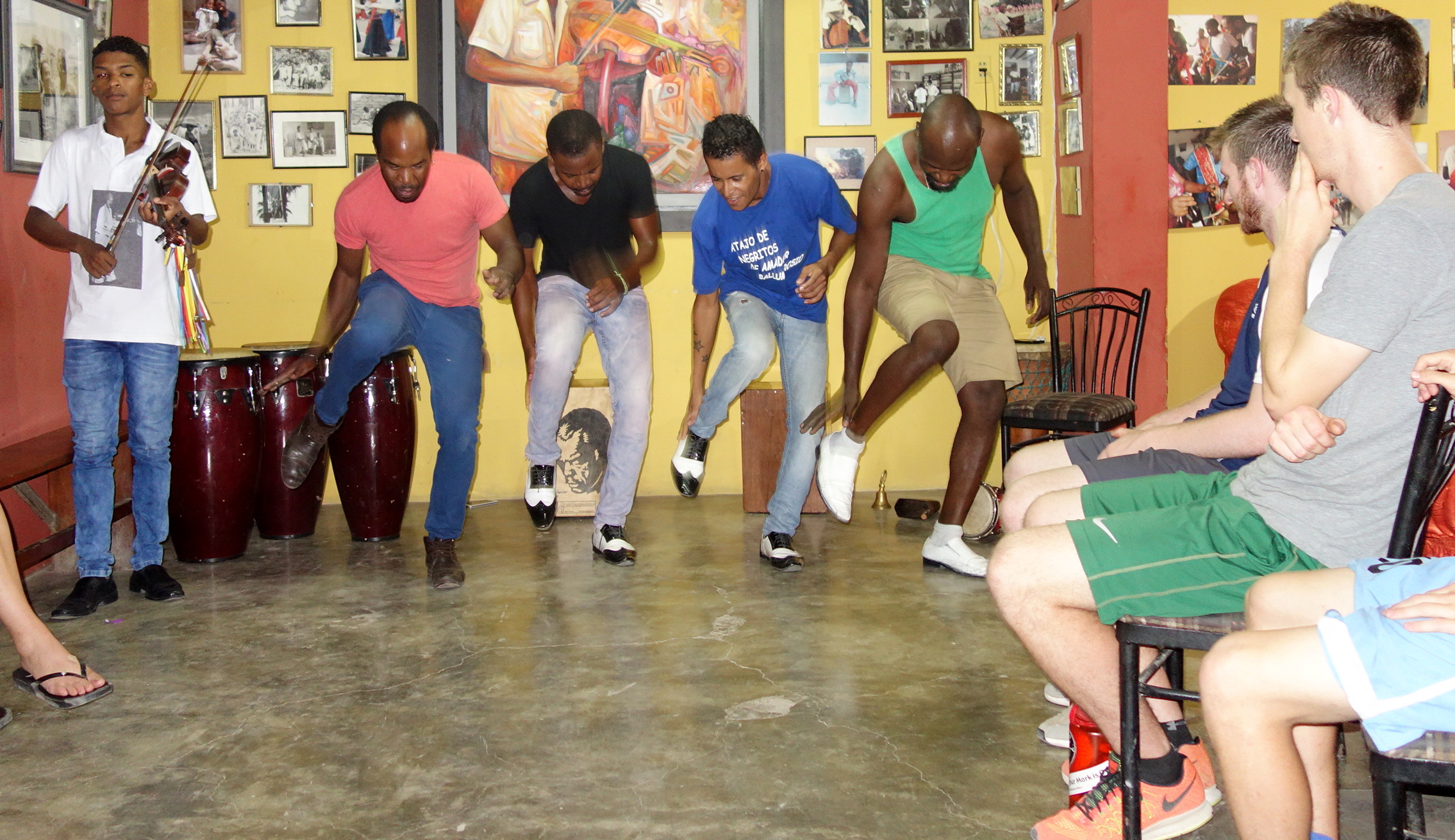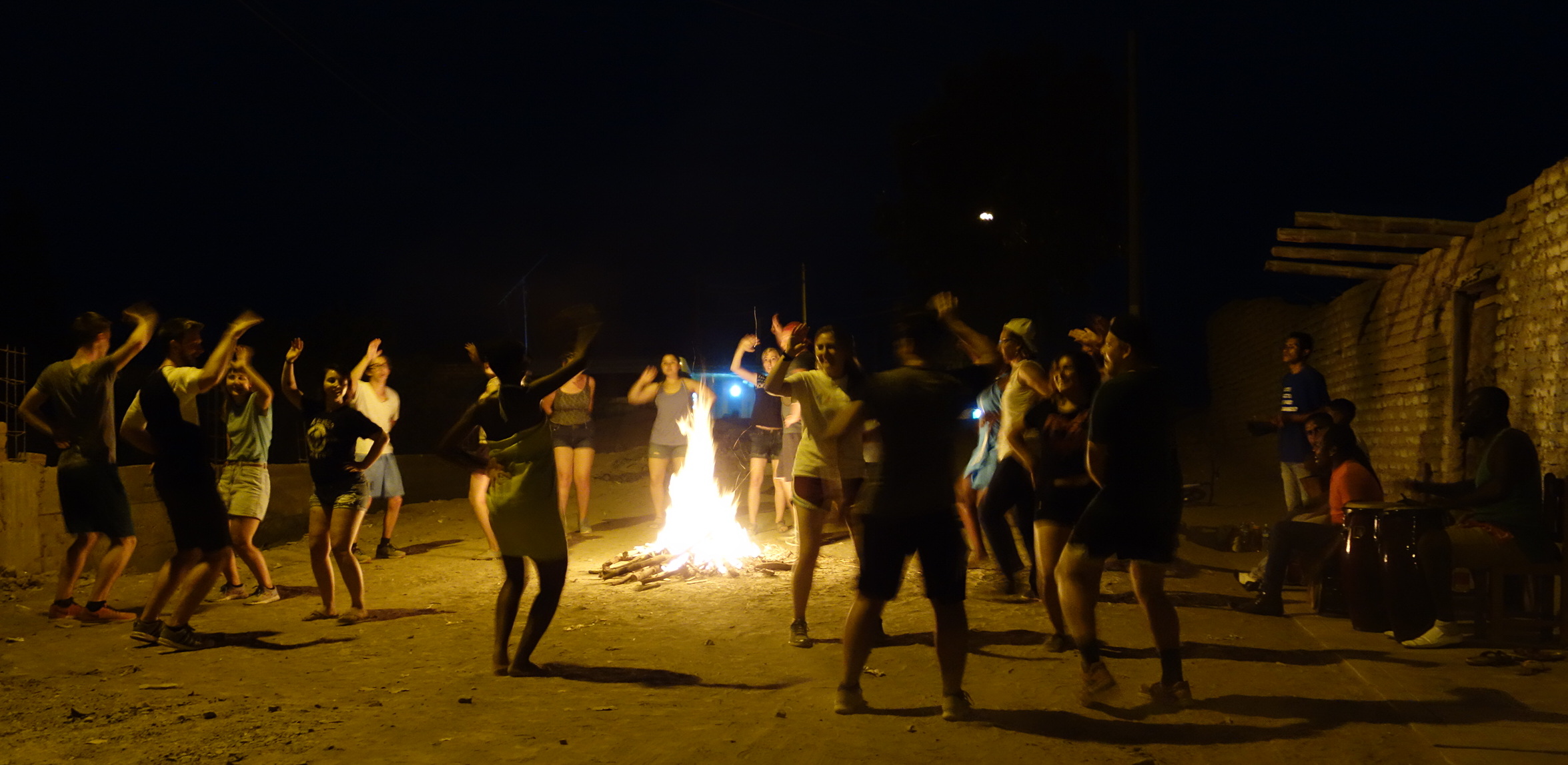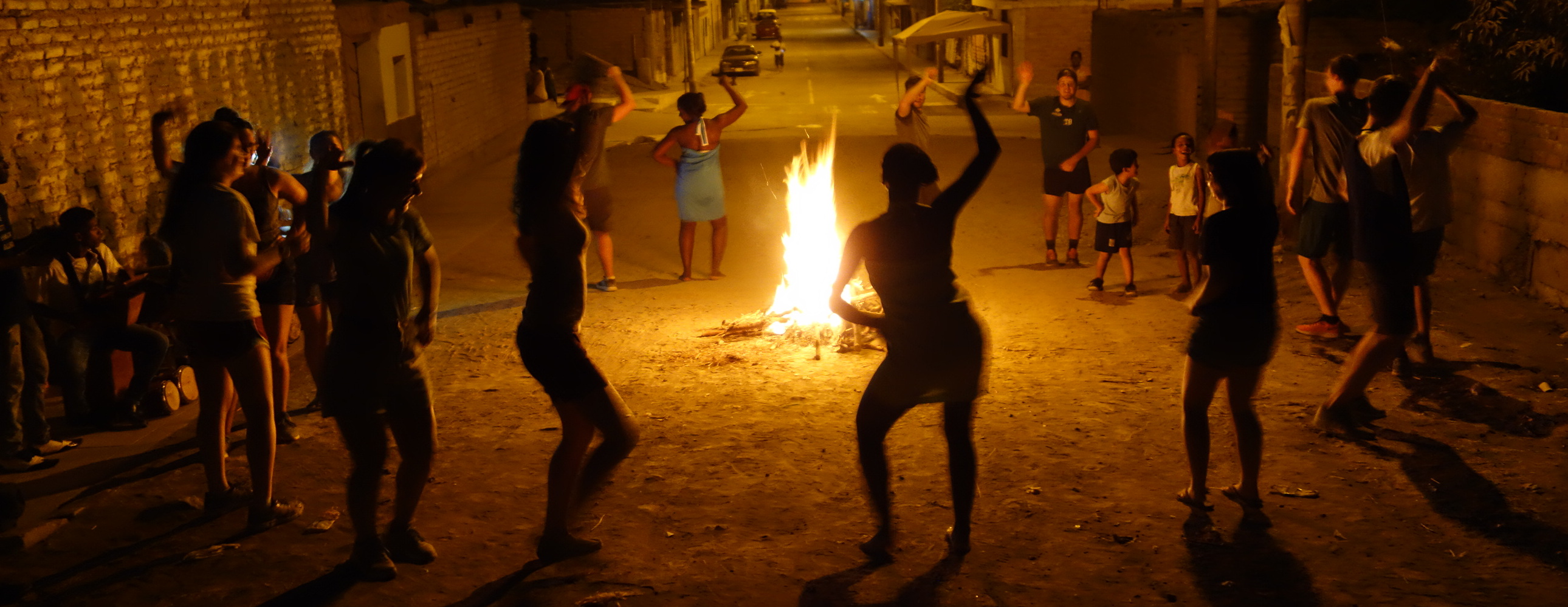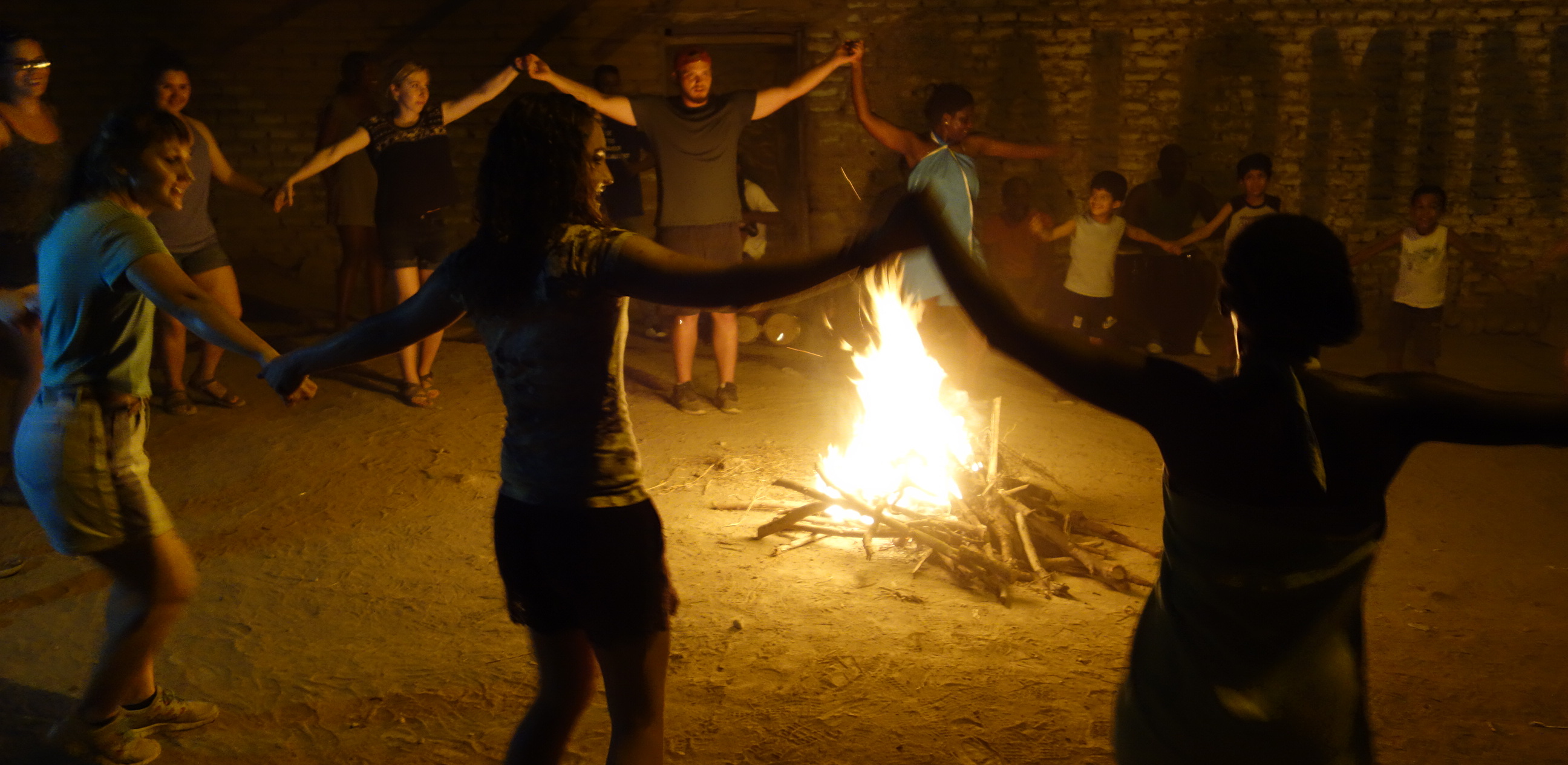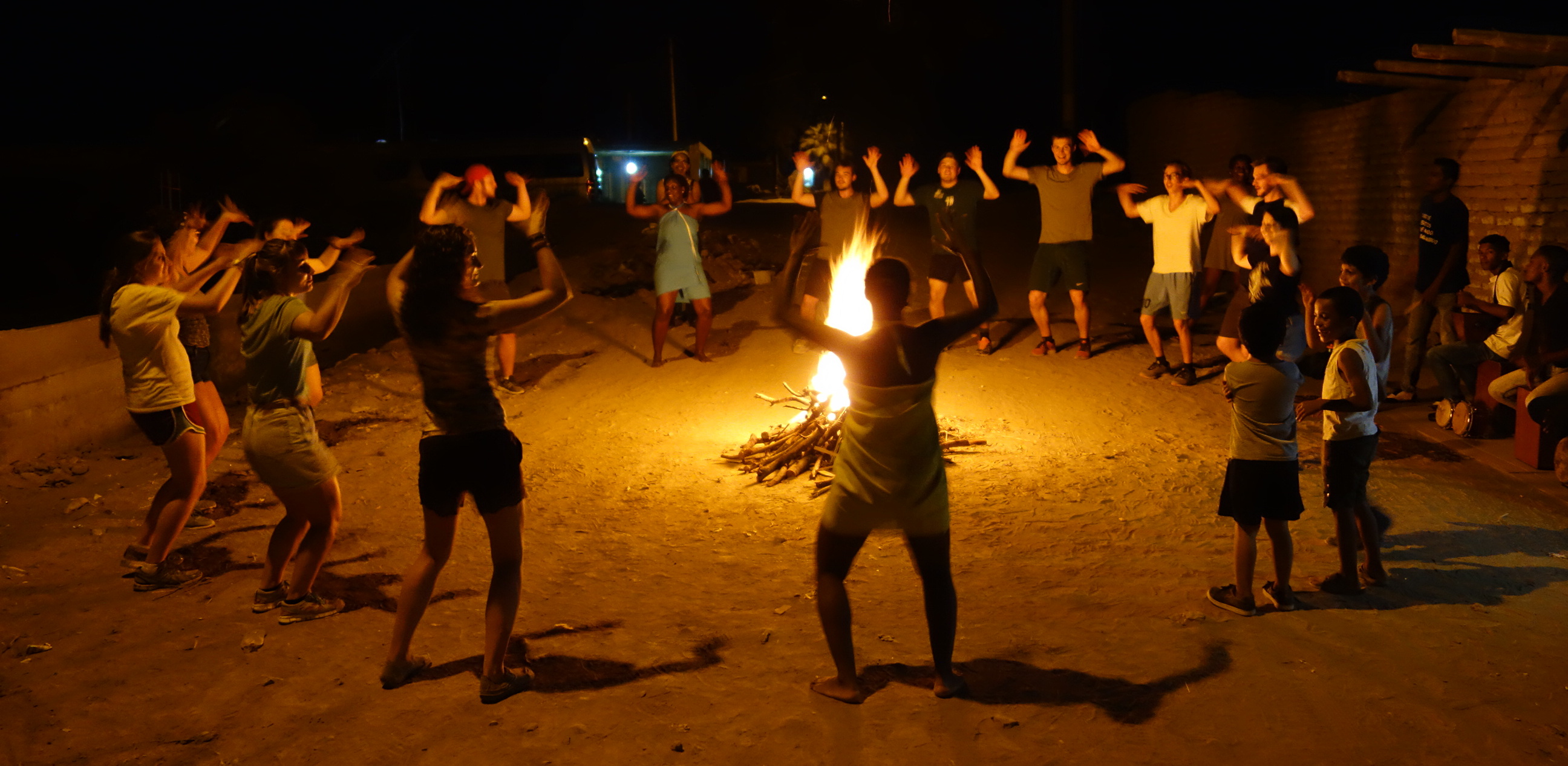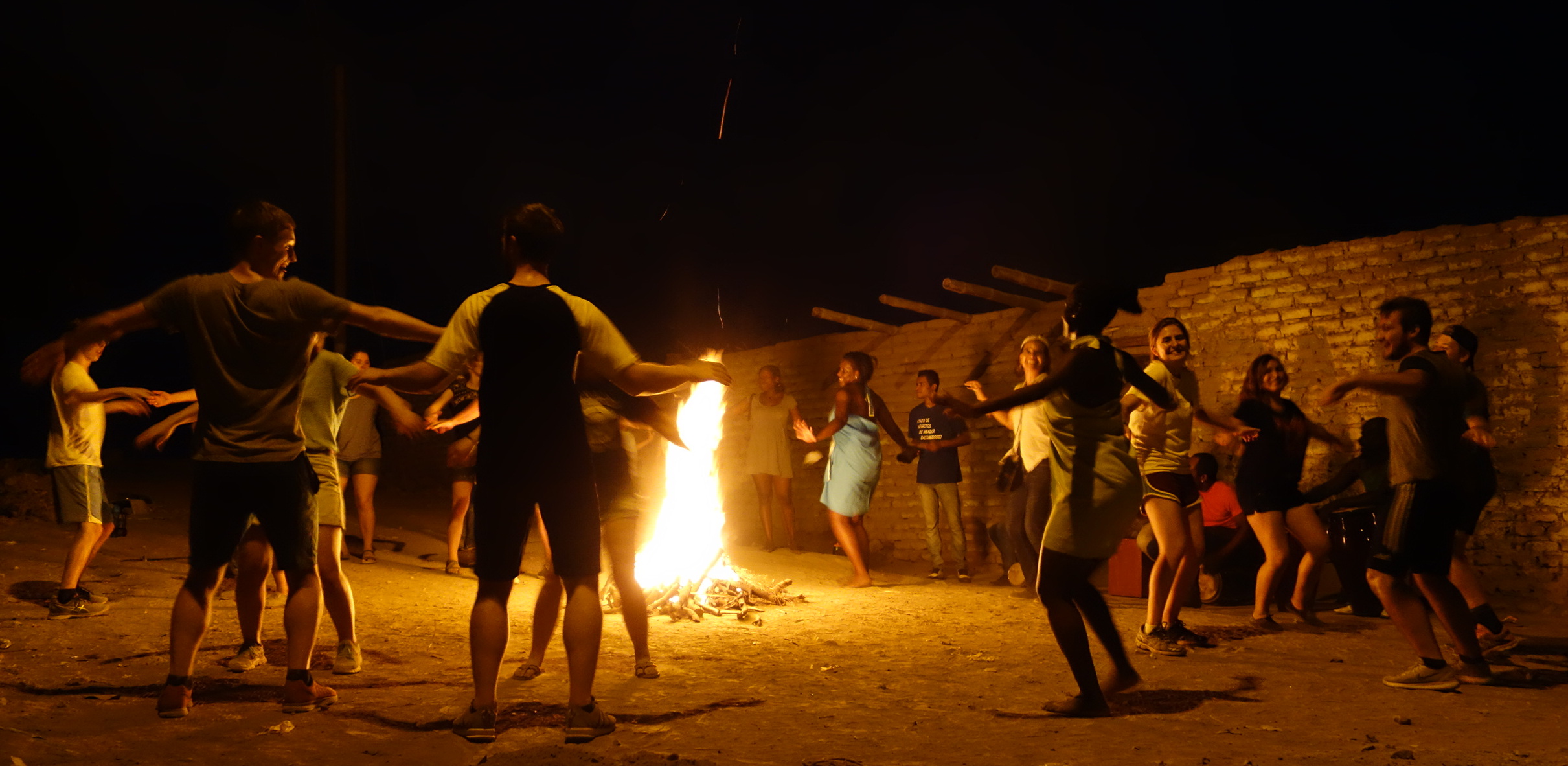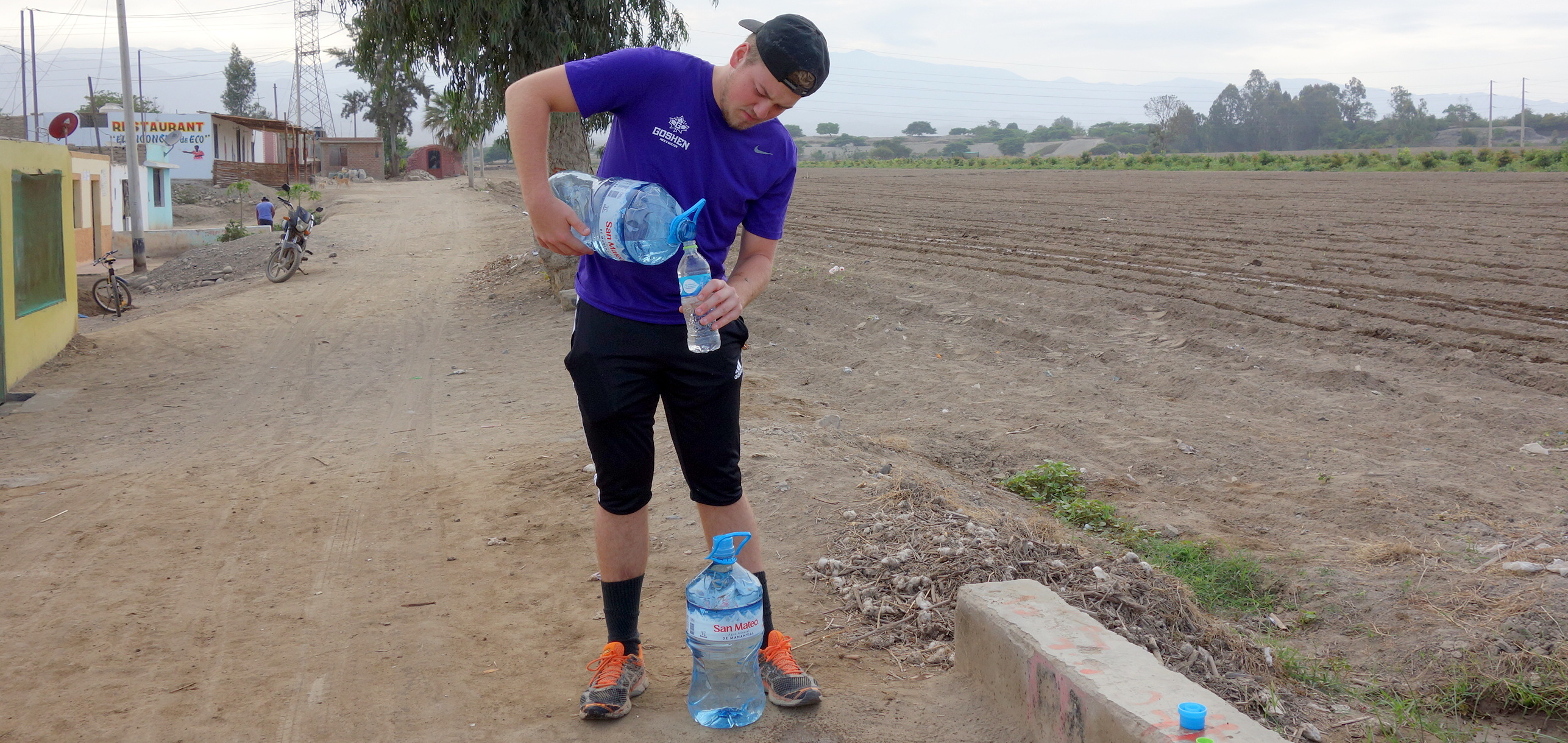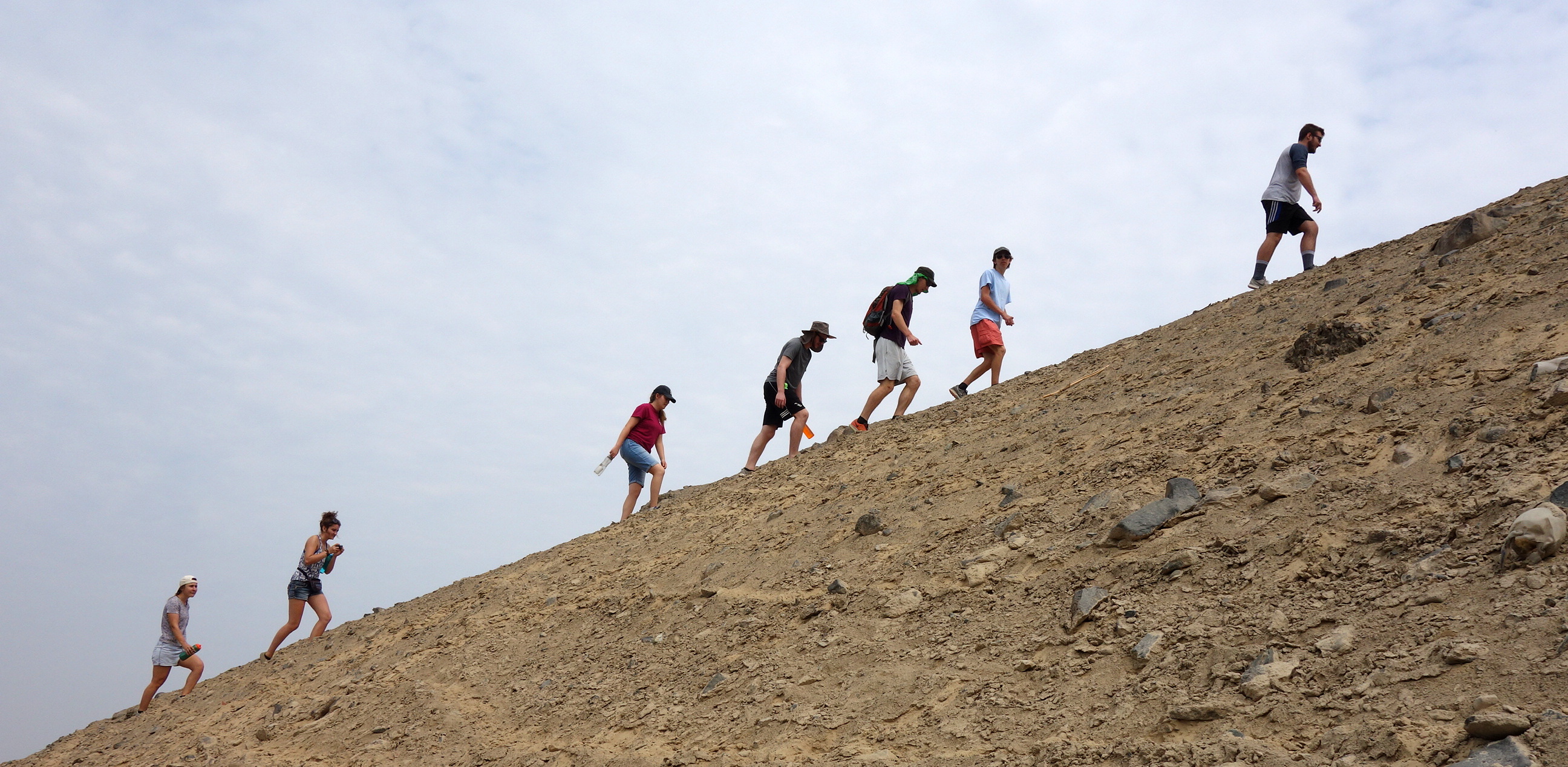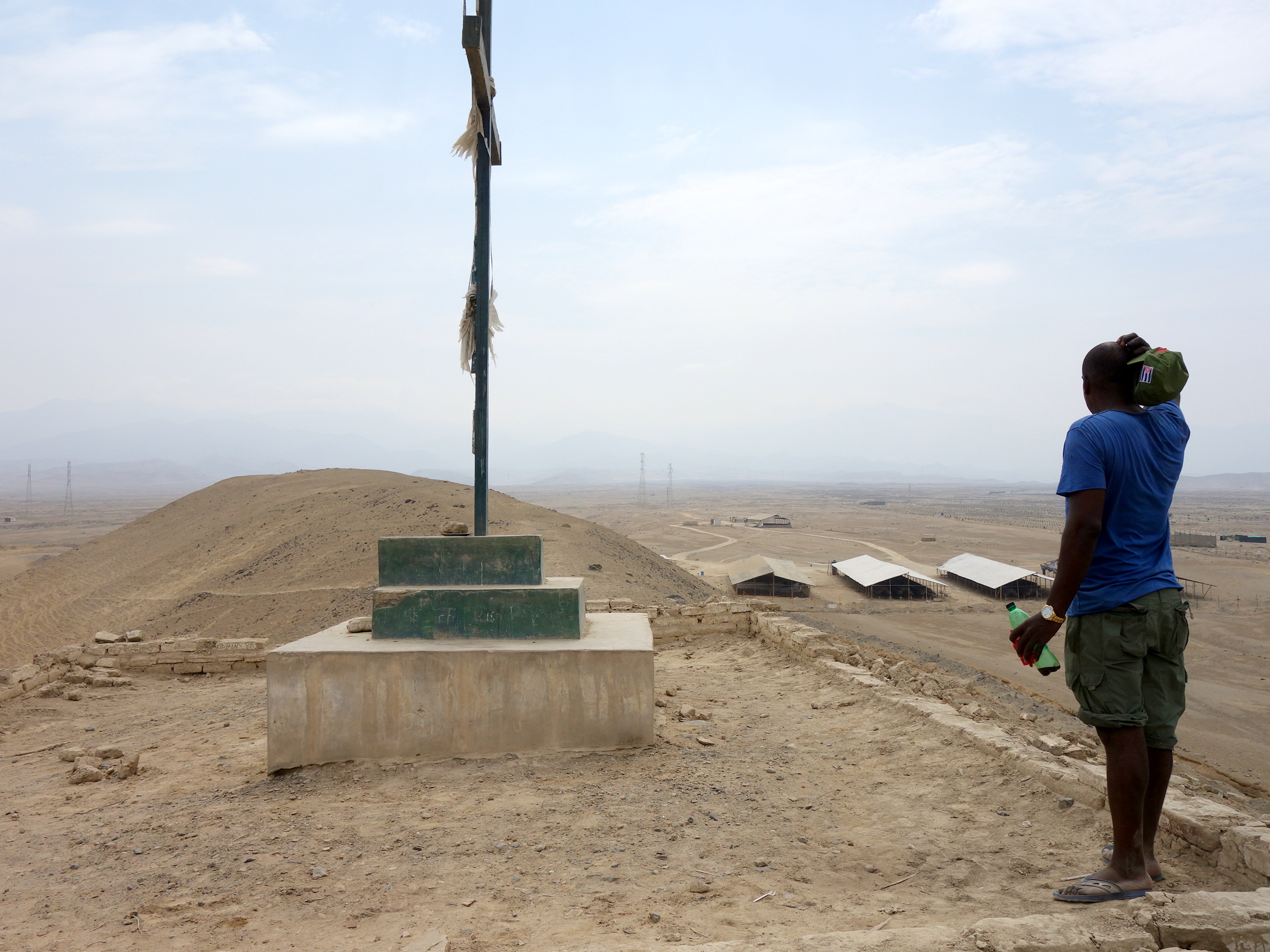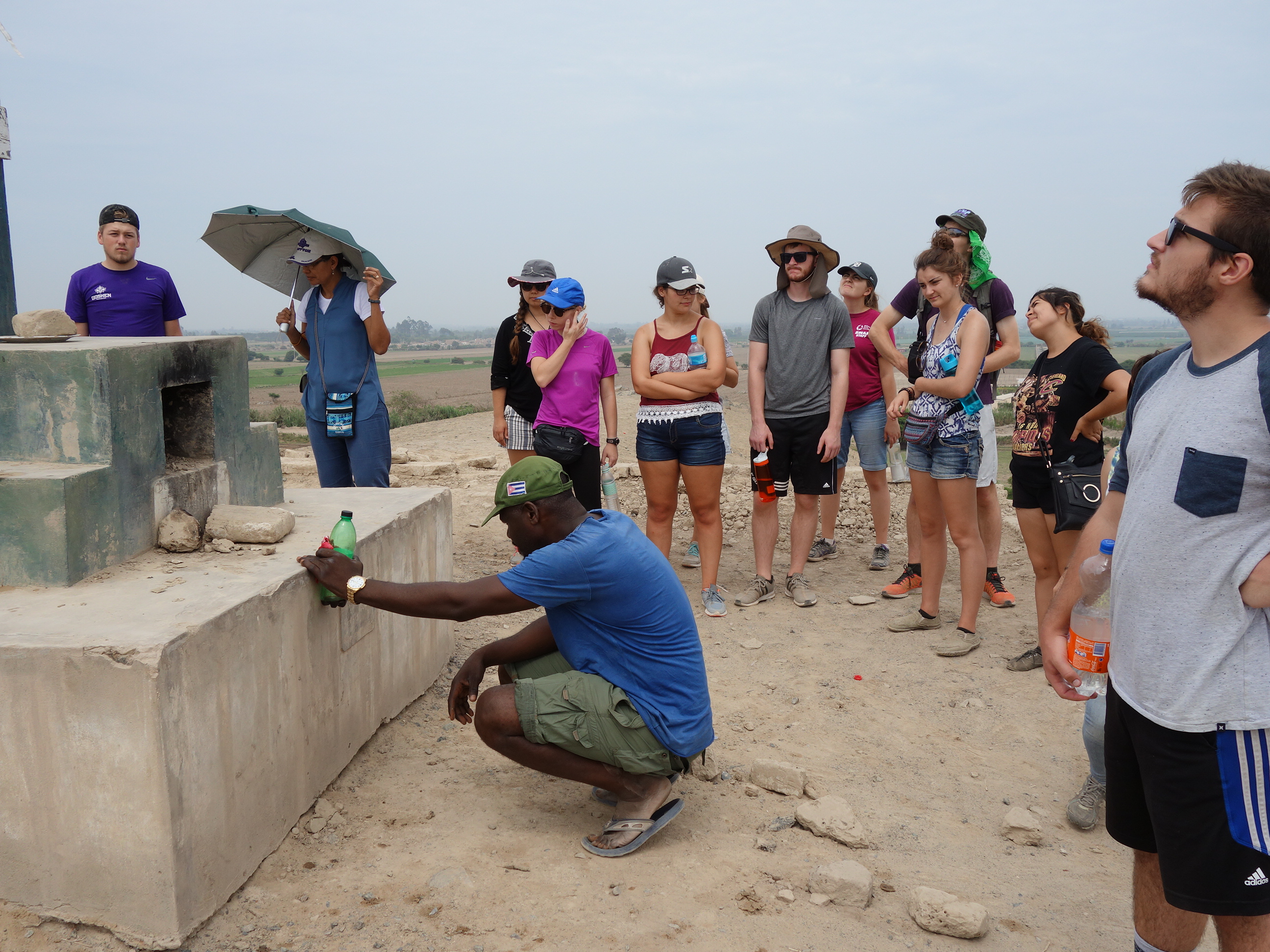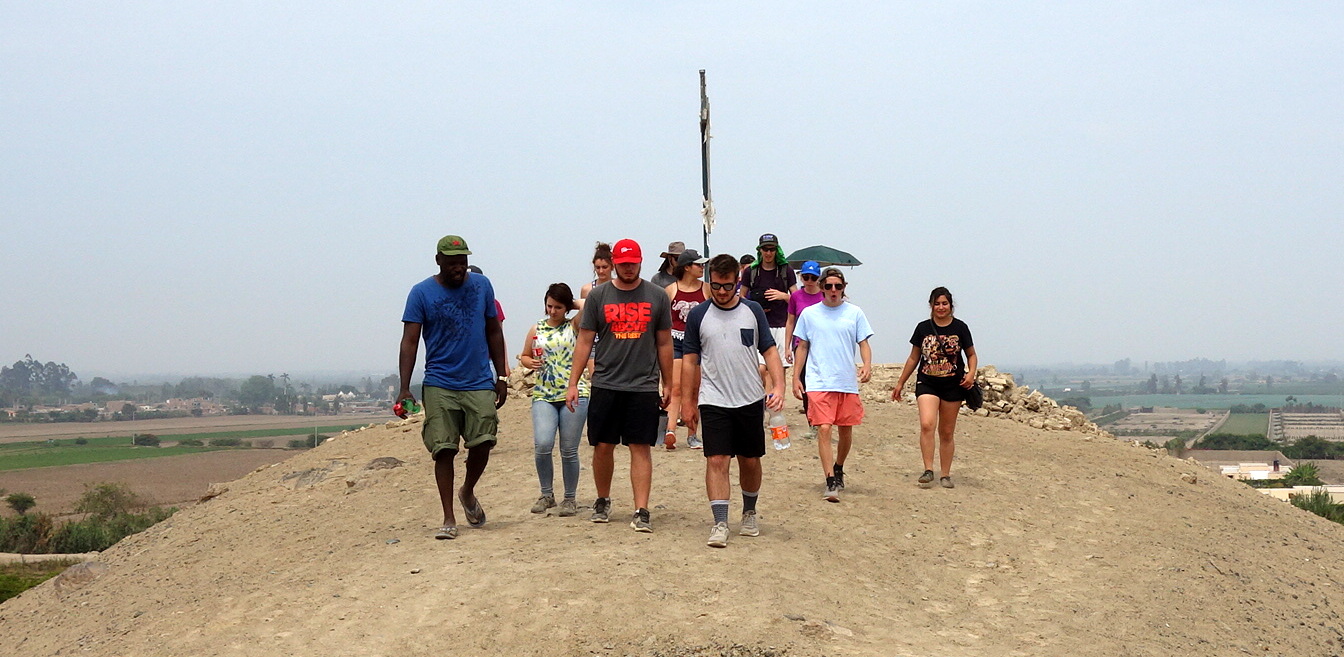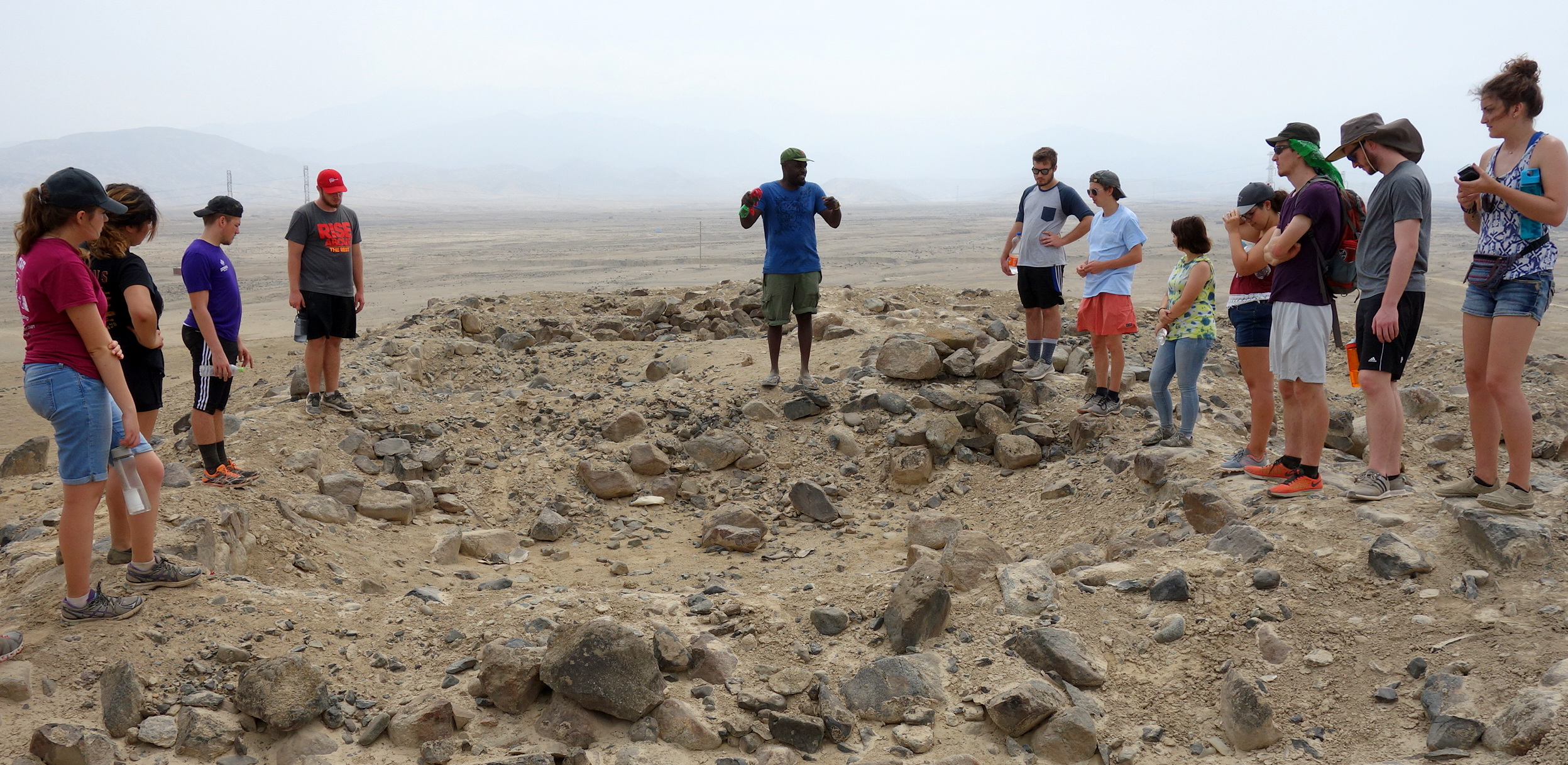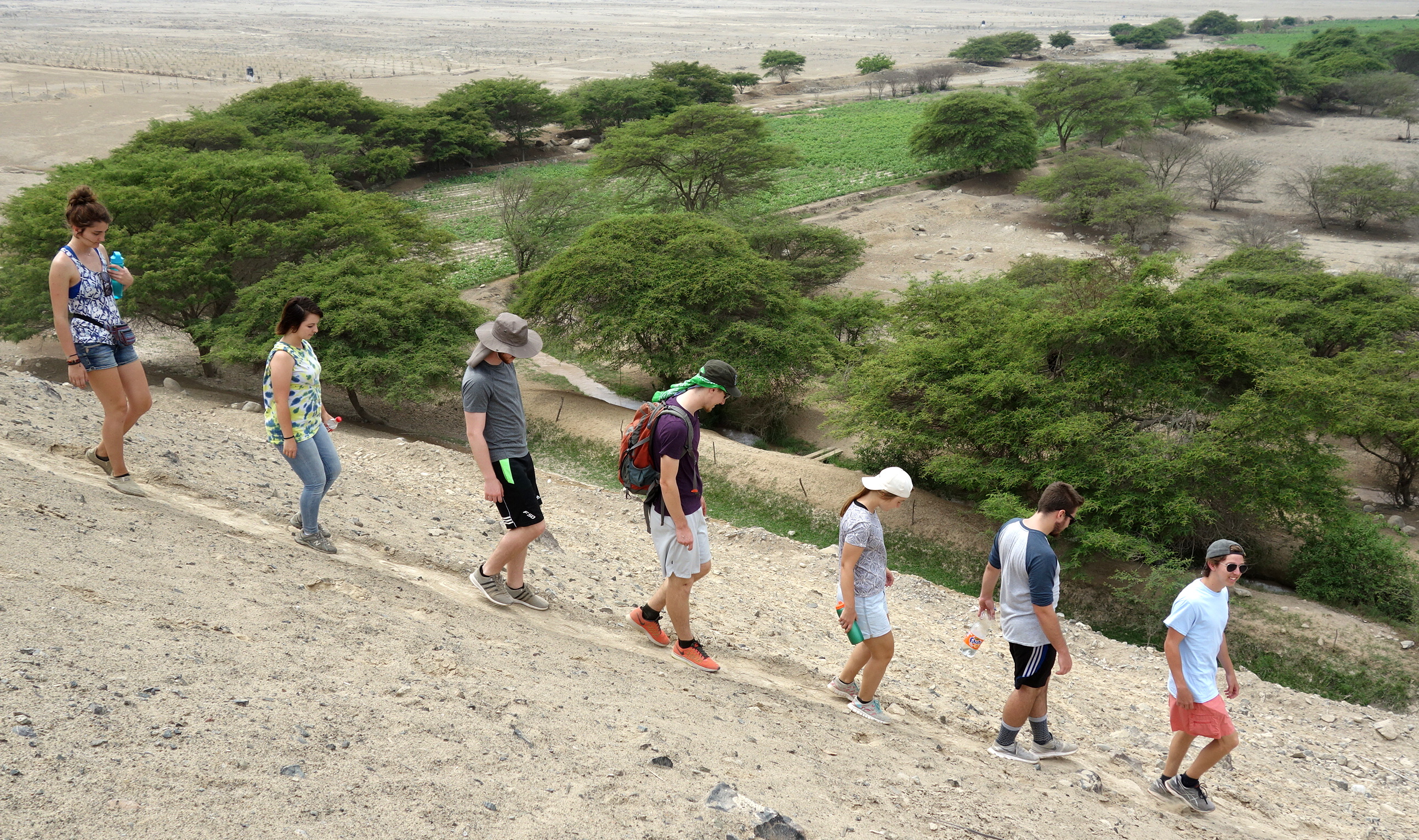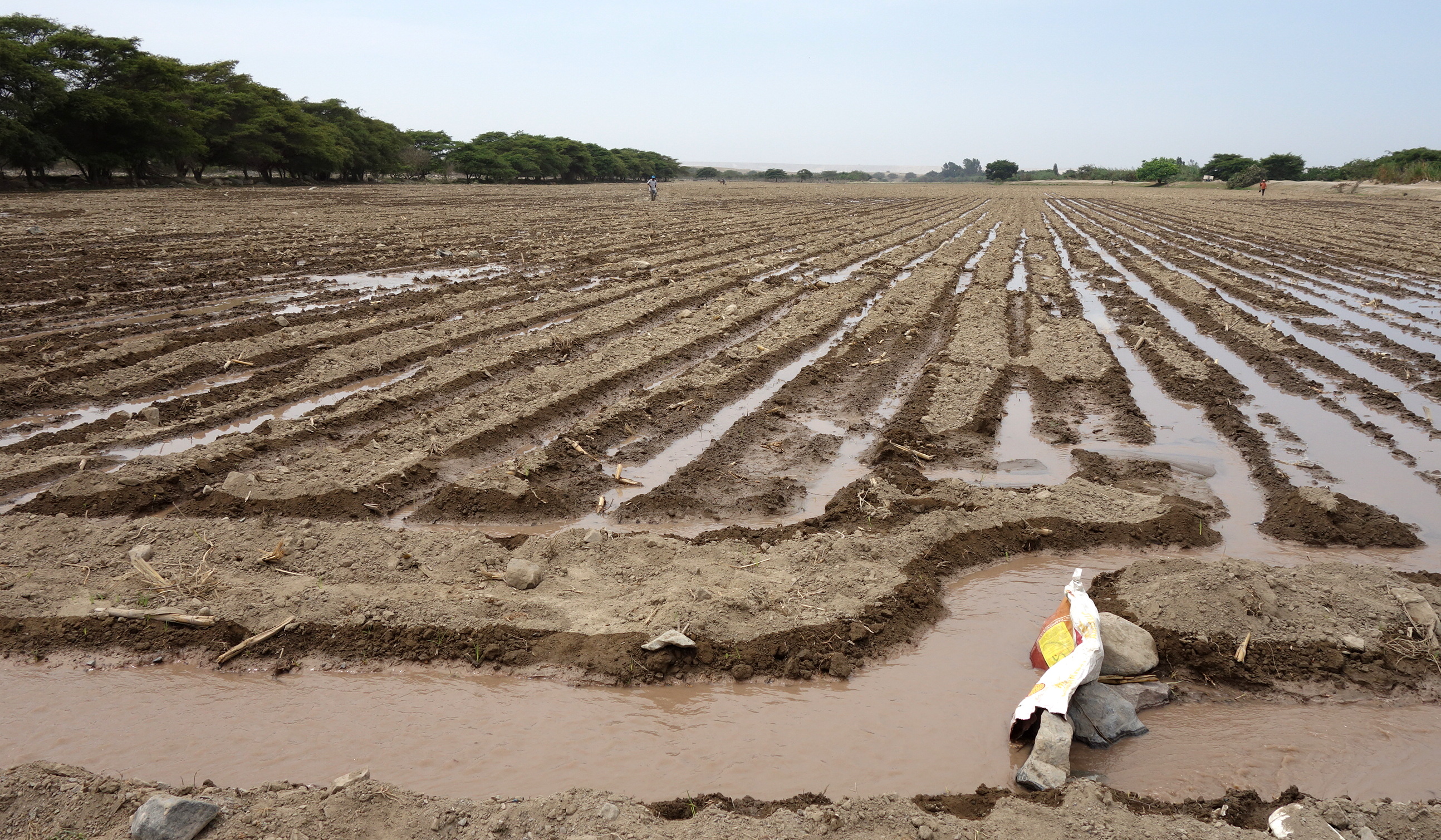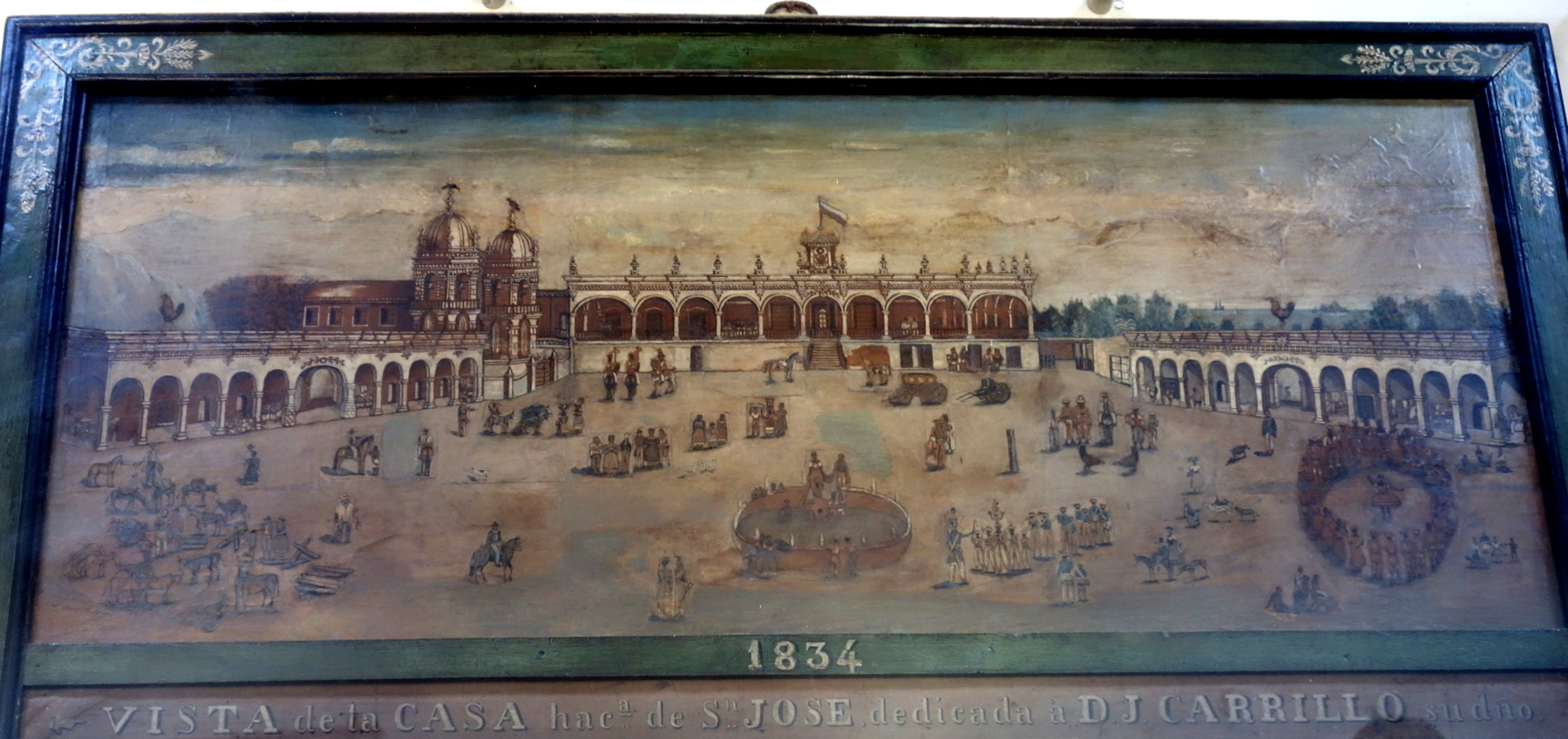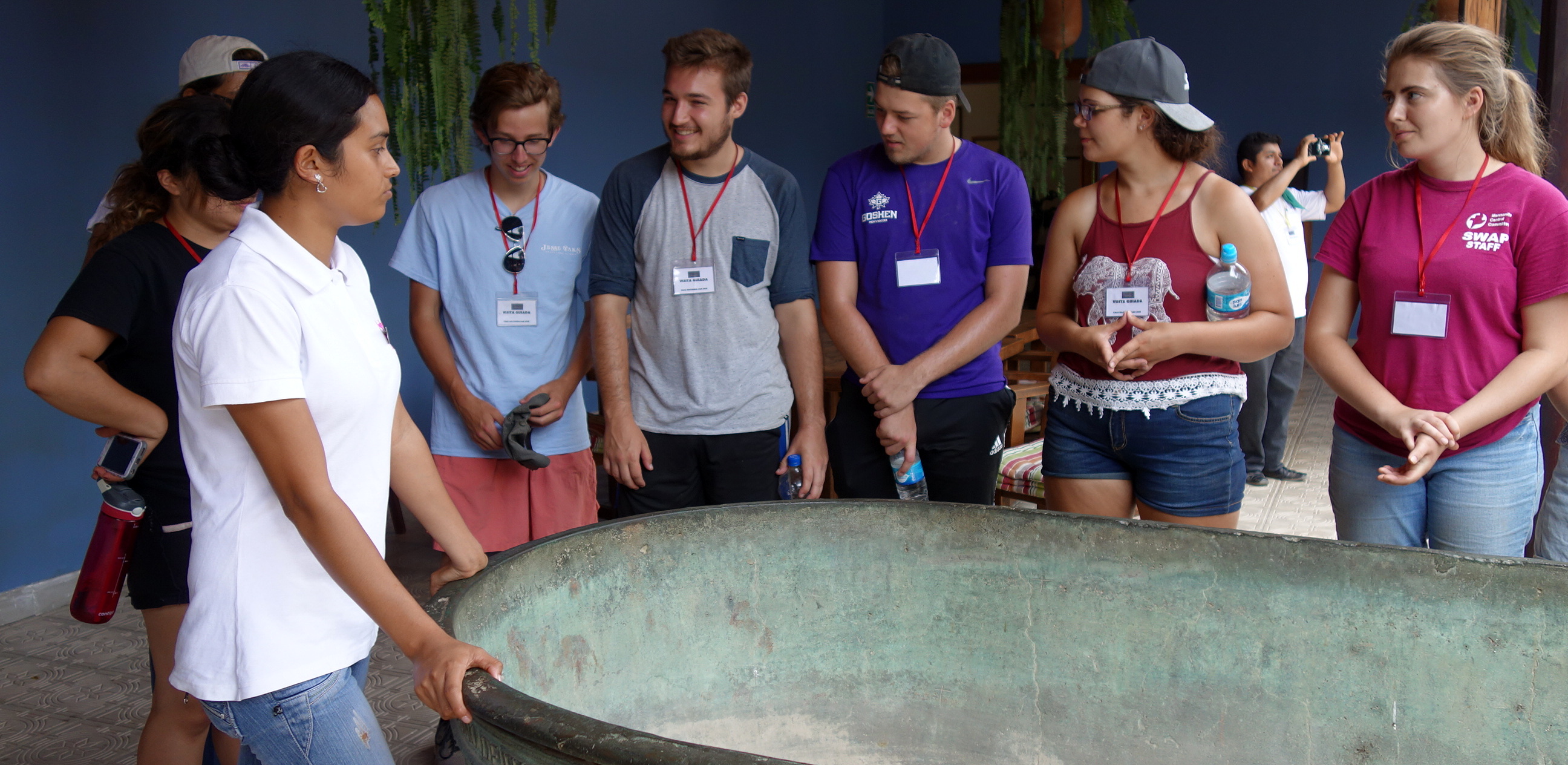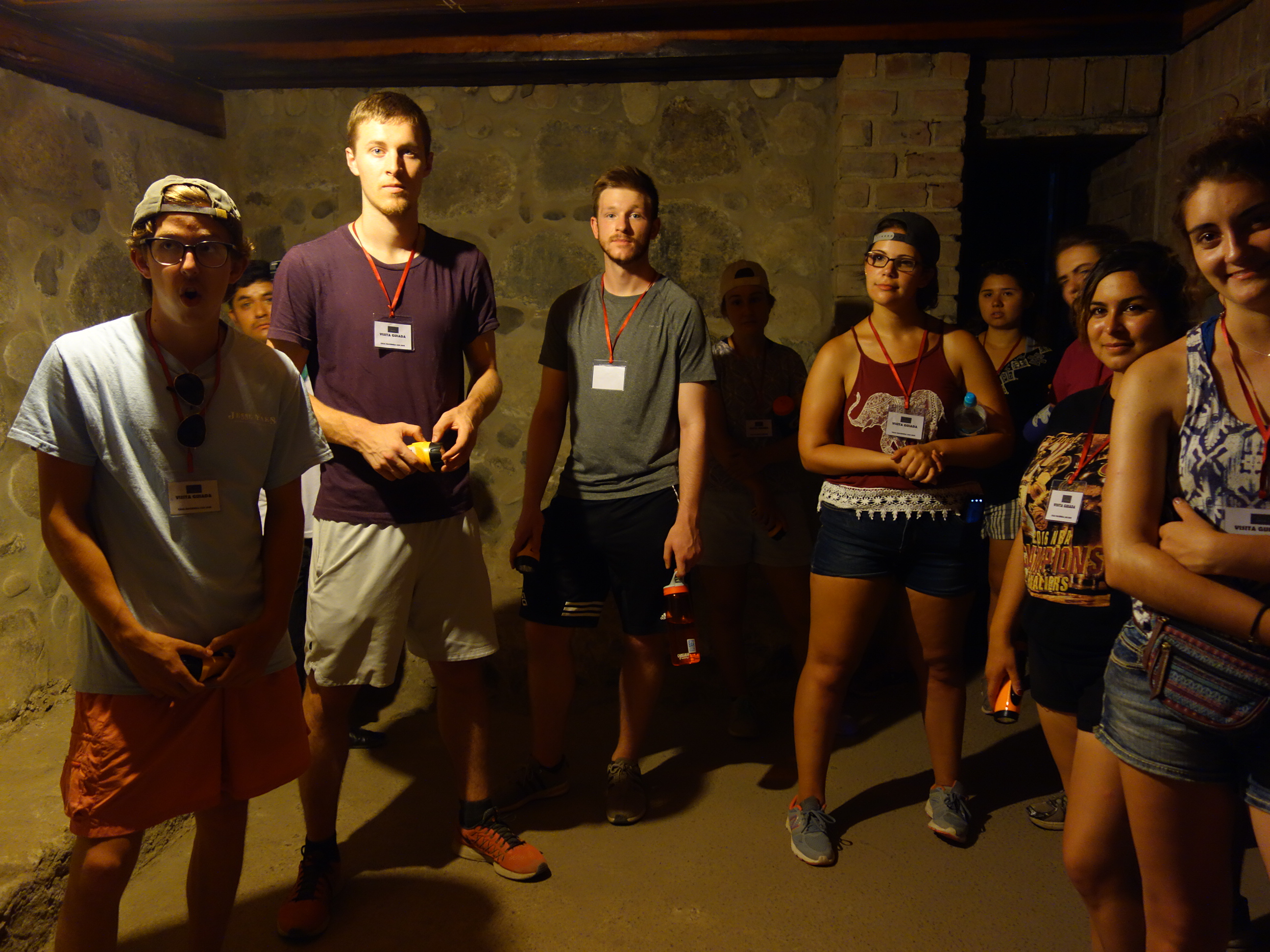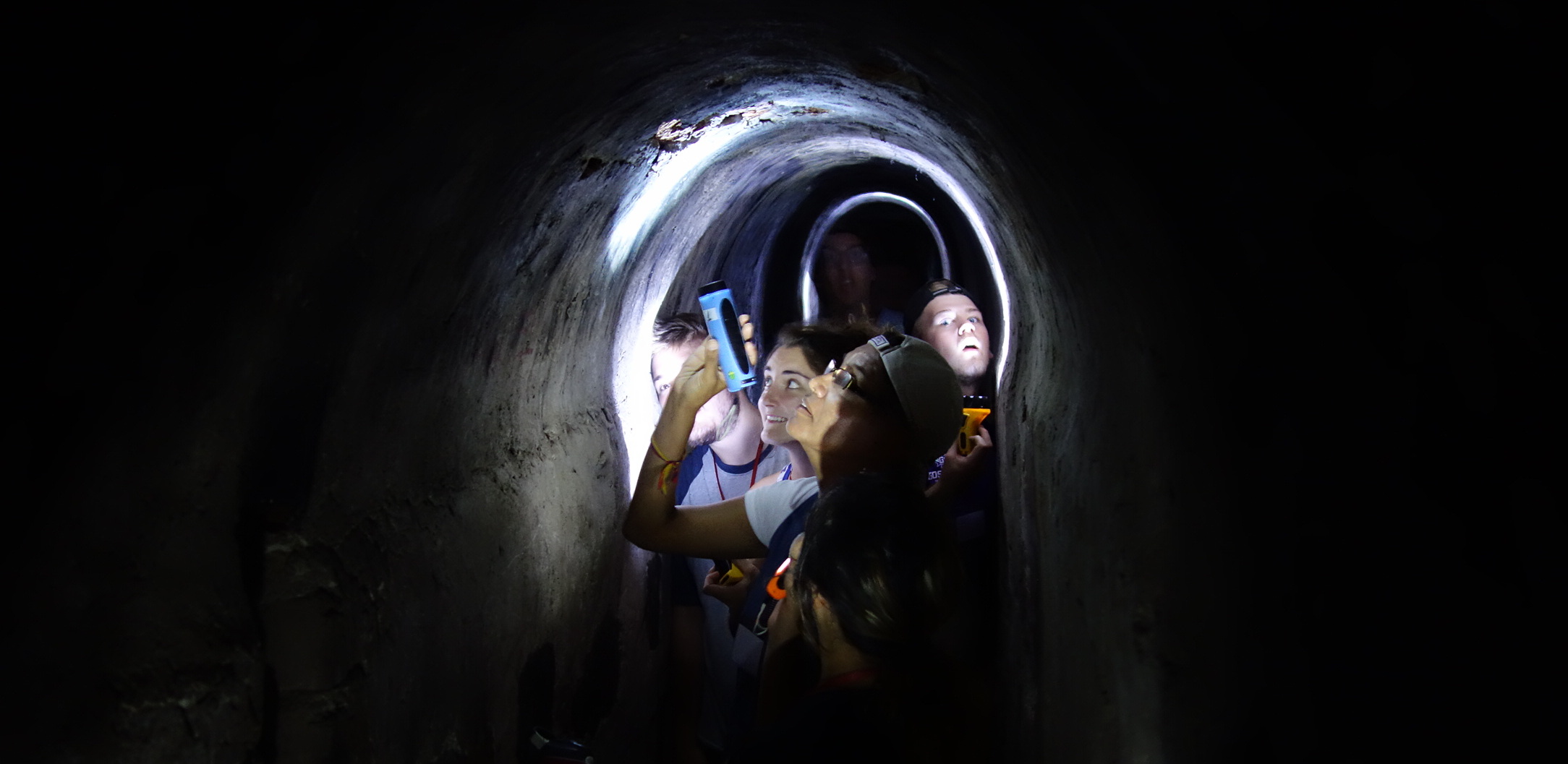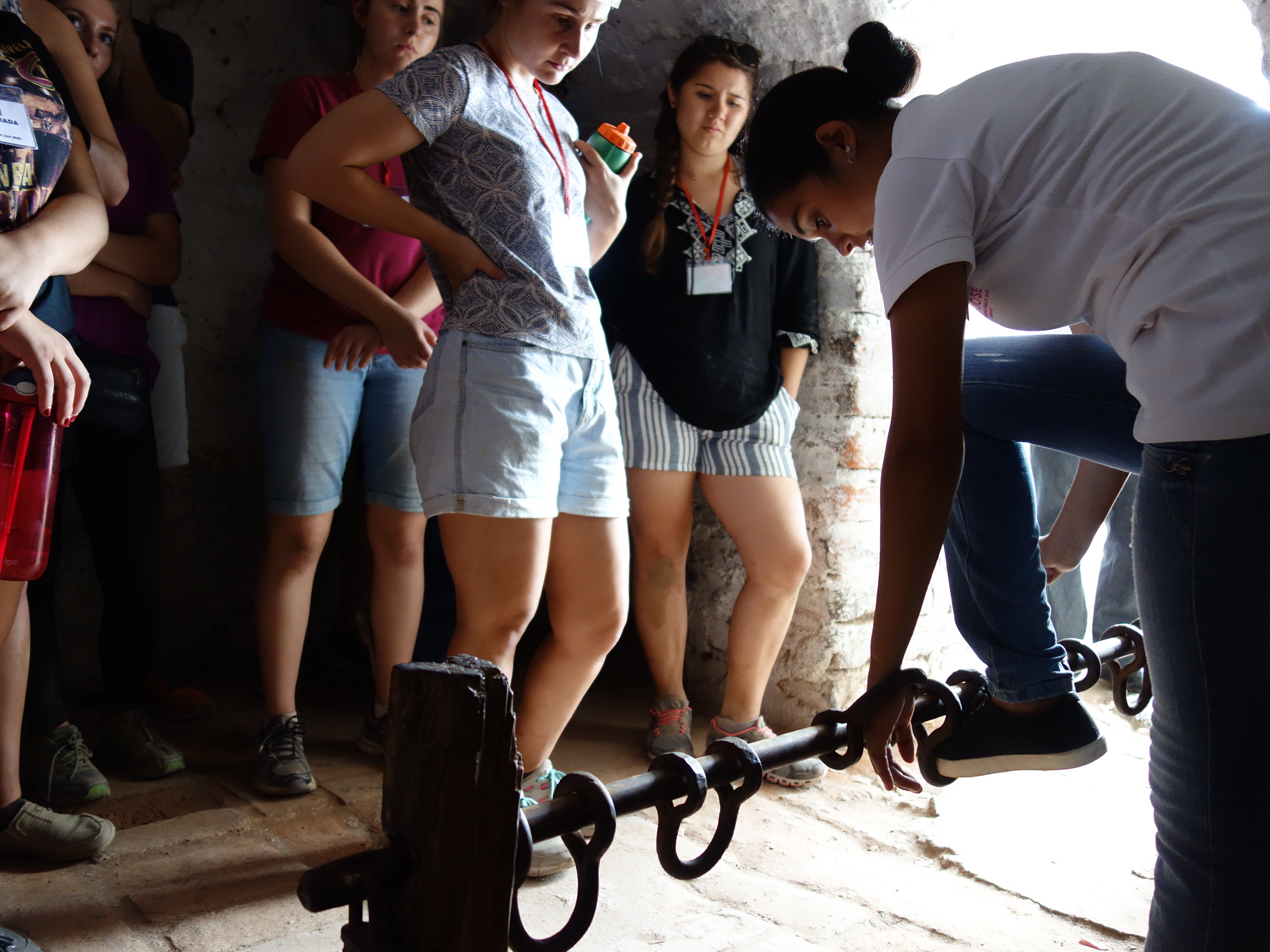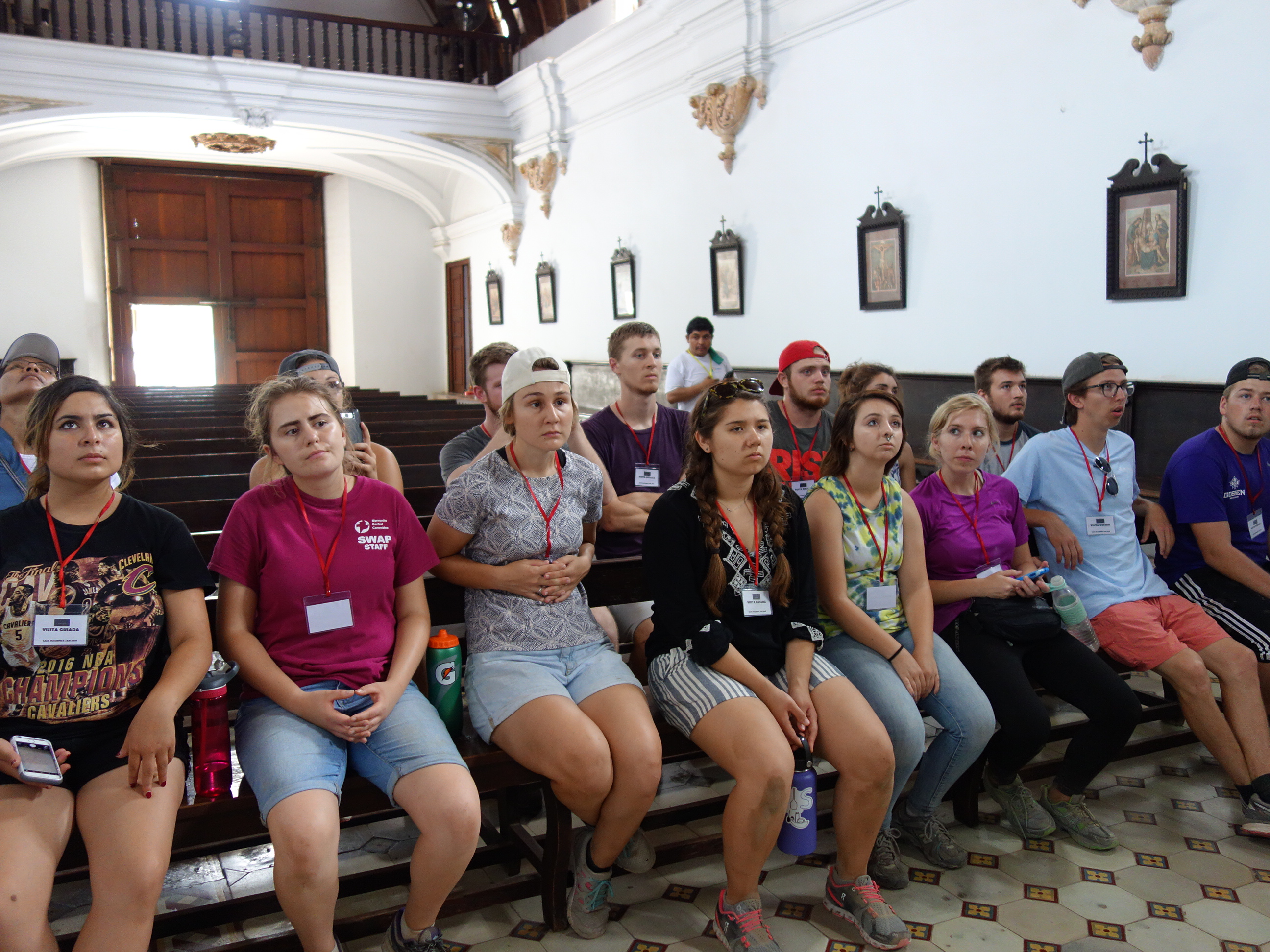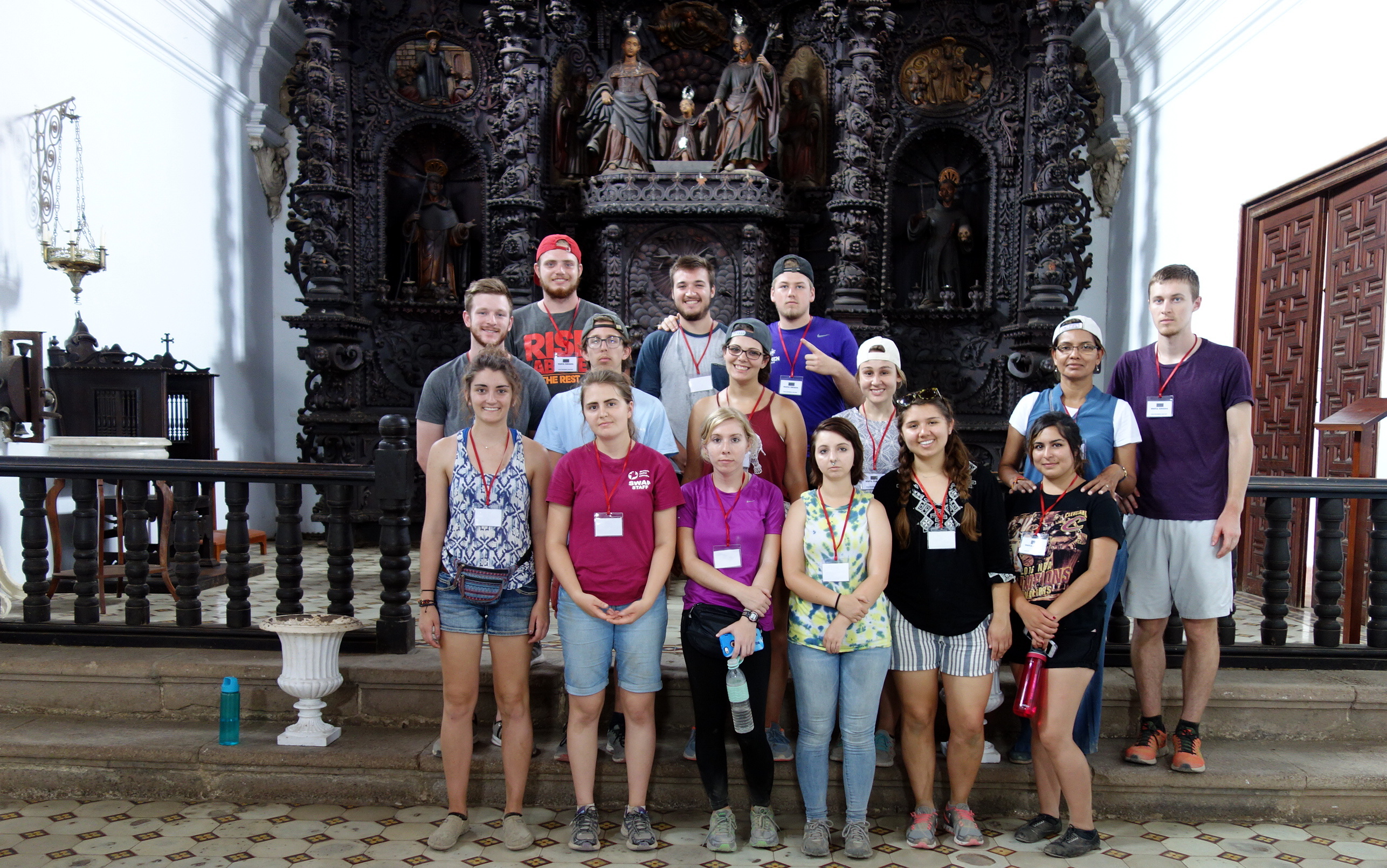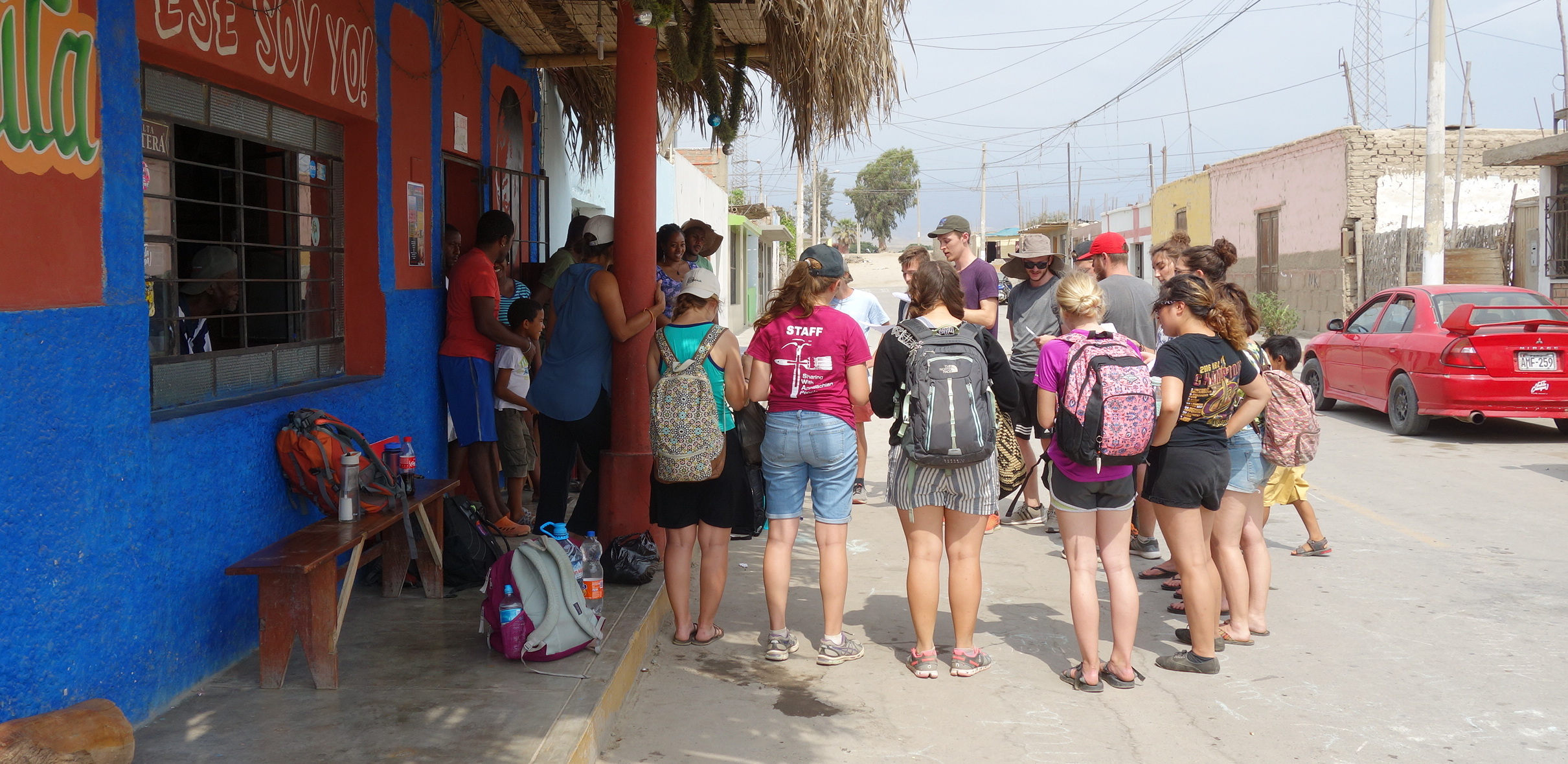Africa and Peru in one small community – Part 2
Thursday night and Friday, February 9-10.
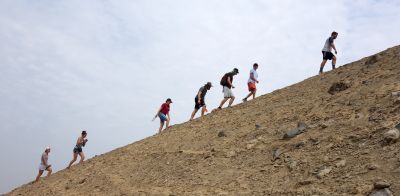
After the Ballumbrosio family fed us supper they put on a musical show filled with beats and zapateo dancing characteristic of their community. Another popular tradition we followed is dancing around a bonfire, also to the beat of drums and cajones.
The next day was dedicated to learning more about the history and lives of African descendants in Peru. Camilo took us to a hill with an altar and the first graves of his ancestors, once they had been freed from slavery. The commanding view of the surrounding desert was also a good place to learn how they have learned to use low-technology irrigation to farm, as well as the competition with large agro-businesses for access to water.
Later we visited a former slave plantation that grew sugar cane and later cotton, a crop that is still grown in the fields around El Carmen. Dating back to 1688, the plantation and its massive hacienda began as a Jesuit monastery, which imported the first slaves. The stories of slave treatment, including torture that lead to death, were harrowing.
This entry is posted on the evening of the students’ last day of their “study” portion of SST in Lima. Tomorrow morning we leave for a week-long tour to several Incan ruins in the Andes, culminating in a visit to Machu Picchu. Until the week is over we will not be able to post more blog entries. Then we will post pictures of tonight’s farewell dinner for the host families, and later several entries from our week of group travels in the Andes.
